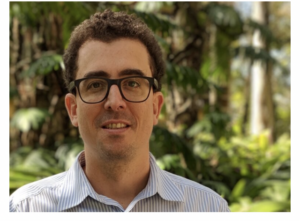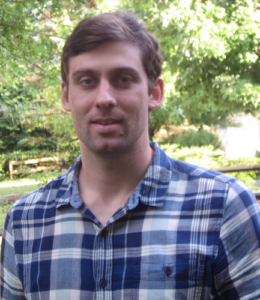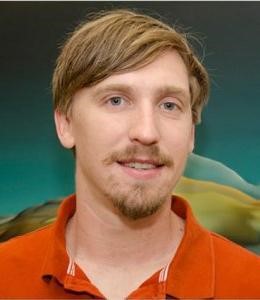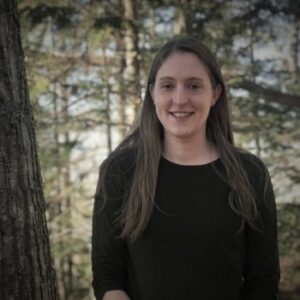This year’s symposium is hybrid – both in person and online. If you wish to join online, please do so using this link:
https://umbc.webex.com/umbc/j.php?MTID=md7eacbdb5d496ada891132ab29813132
Friday, Apr 22, 2022 8:15 am | 9 hours | (UTC-04:00) Eastern Time (US & Canada)
Meeting number: 2620 342 6382
Password: mgWm8VY9Js3
The topic of the 2022 Earth Day Symposium is Environmental Justice. This year the event is hosted not only by the Atmospheric Physics (ATPH) department, but also the Geography and Environmental Systems (GES) department. The event will include multiple speakers invited by both departments, a poster session featuring graduate, undergraduate, and high school researchers, and a weather balloon launch. The symposium will be primarily in person but virtual options are available to both speakers and attendees. We look forward to seeing you!
2022 Speakers:

My research focus on understanding the role of water vapor and clouds on the climate system and how it might be changed by anthropogenic influences. My interests also include biosphere-atmosphere interactions and, particularly, large-scale water vapor transport and the importance of the Amazon forest for the moisture recycling and the global hydrological cycle. I have worked with physical parameterizations in climate models, particularly radiation and convection, and the development of Earth System Models.

Dr. Reed Espinosa is currently a Research Physical Scientist at the NASA Goddard Space Flight Center where he develops novel methods for the retrieval of aerosol properties from optical measurements. Prior to his current appointment he held a NASA Postdoctoral Fellowship (NPP) at the same institution. His recent work has focused heavily on the development of methods for the synergestic retrieval of aerosol properties from polarimeteric imagers and LIDAR profiles. He was recently a member of the Aerosol and Cloud, Convection and Precipitation (ACCP) Aerosol Science Impact Team (SIT-A), where he performed retrieval simulations on different potential observing system approaches and architectures. This retrieval development work is continued through Dr. Espinosa’s role as a member of the AtmOS Algorithm Working Group. He has extensive experience applying the Generalized Retrieval of Aerosol and Surface Properties (GRASP) to both remote sensing and in situ observations. Prior to his NPP appointment, Dr. Espinosa developed several instruments designed to measure the polarized angular light scattering signal produced by an aerosol, including the first open-path aerosol polar nephelometer to fly aboard an aircraft. He supported successful deployments of these instruments in five separate airborne field campaigns.

Dr. John T. Sullivan currently works in the Atmospheric Chemistry and Dynamics Laboratory at the NASA Goddard Space Flight Center (Greenbelt, MD). He is currently the NASA Tropospheric Ozone Lidar Network (TOLNet) project scientist. His expertise is in performing measurements of atmospheric constituents using active remote sensing techniques, such as lidar (light detection and ranging), for applications such as air quality, satellite validation, and stratospheric trends. Dr. Sullivan has been critical in designing, calibrating, and deploying transportable lidars for measuring tropospheric and stratospheric ozone profiles in NASA campaigns, such as DISCOVER-AQ and KORUS-AQ and various NDACC intercomparison campaigns. He was awarded the NASA Postdoctoral Program (NPP) Fellowship to continue his contribution of novel observations of the atmosphere to further NASA’s science exploration. In 2017, he was named as the Early Career Scientist associated with the NASA Science Innovation Fund (SIF) supported Ozone Water-Land Environmental Transition Study (OWLETS) in the Tidewater, VA region. He transitioned to the PI for the 2018 OWLETS field deployment within the northern Chesapeake region and the Co-PI for the TRACER-AQ (Tracking Aerosol Convection interactions ExpeRiment – Air Quality) in the Houston, TX metropolitan area in 2021. His role within TOLNet is to guide an inter-agency cadre of scientists and researchers to provide high spatio-temporal observations of boundary layer and free tropospheric ozone to study the character of the atmospheric structure that can be used to better evaluate satellite retrievals and improve the processes in air-quality forecast and diagnostic models.

Dr. Yaitza Luna-Cruz:
Dr. Yaítza Luna-Cruz is an atmospheric physicist. She has spent most of her career working in operations for the DoD Defense Threat Reduction Agency (DTRA) Technical Reachback. In her role as subject matter expert in Chemical, Biological, Radiological, Nuclear, and Explosive (CBRNE) transport and dispersion modeling and critical real-world natural hazard modeling (extreme weather events), she was able to support 24/7/365 operations, planning, and research & development efforts for federal and international agencies. After DoD, Dr. Luna-Cruz joined the private sector serving as a product and project manager for Jupiter Intelligence, a climate change analytics company. Dr. Luna-Cruz is currently a support scientist at the Chief Science Data Office of NASA’s Science Mission Directorate (SMD) and the Earth Science Data Systems (ESDS) Program in the Earth Science Division (ESD) at NASA Headquarters in Washington, DC. In her current role, Dr. Luna-Cruz is leading different initiatives such as Open-Source Science to build an inclusive, open, transparent, and collaborative science community, and NASA ESD Equity and Environmental Justice (EJ) activities to expand awareness, accessibility, and use of Earth science data.
Yaítza earned her Ph.D. in atmospheric sciences from Howard University in Washington, DC. and her B.Sc. & M.Sc. in Physics from the University of Puerto Rico at Mayagüez (UPRM). As a Latina in STEM, Dr. Luna-Cruz is a passionate advocate for diversity, equity, inclusion, and accessibility (DEIA). Yaítza was also recognized as a leader through her student years been the founder and first president of the first AMS Student Chapter of the Caribbean (at UPRM). She continues to be a STEM ambassador through many outreach and mentorship activities. She is also an active leader in multiple American Meteorology Society (AMS) Boards and Committees and currently serves as the AMS Women’s committee chair under AMS Board on Representation, Accessibility, Inclusion, and Diversity (BRAID). Dr. Luna-Cruz is one of the senior advisors for the Puerto Ricans in the Atmospheric Sciences and Meteorology (PCAM).

Dr. Maria Molina:
Dr. Maria J. Molina (she/her) is a Project Scientist working in the Climate and Global Dynamics Laboratory at the National Center for Atmospheric Research (NCAR) in Boulder, Colorado. She also holds an appointment as an Adjunct Assistant Professor at North Carolina State University in the Department of Marine, Earth, and Atmospheric Sciences. Beginning Fall 2022, Maria will be an Assistant Professor at the University of Maryland at College Park in the Department of Atmospheric and Oceanic Science. Maria’s research focuses on the application of machine learning for weather and climate problems. She earned a doctoral degree from the Earth and Ecosystem Science Program at Central Michigan University, a master’s degree in Climate and Society from Columbia University, and a bachelor’s degree in Meteorology from Florida State University. Maria previously worked as a broadcast meteorologist on national cable news based in New York City and as a middle school Earth and Space Science teacher. In addition to atmospheric and climate research, she is passionate about early career scientist issues and diversity, equity, and inclusion. Maria grew up in South Florida, currently lives in Colorado with her Maltese dog named Cumulus, and enjoys alpine (downhill) skiing.

Dr. Rocha-Lima’s research includes the study of the microphysical, optical properties and composition of atmospheric particles, their fundamental interaction with light, and their effects in the atmosphere. This work is important to understand how particulate matter present in the Earth’s atmosphere interacts with solar radiation, their effects as atmospheric constituents, and their implications for air pollution, human health, and climate.
Her primary research focuses on laboratory and in situ measurements of the properties of atmospheric particles, satellite data analysis, and evaluation of atmospheric models. One of the goals is to obtain an update and accurate database of optical properties of atmospheric particles to improve remote sensing and modelling. Another branch of Dr. Rocha-Lima’s research is to investigate how Earth’s atmospheric composition has been changing in the recent decades locally and globally, and which mechanisms associated to natural and/or anthropogenic sources have been driving those changes. For that, Dr. Rocha-Lima combines long term satellite observations of atmospheric components and key meteorological parameters with global simulations using the NASA Goddard Earth Observation System (GEOS) model in collaboration with scientists from the Laboratory of Atmospheric Chemistry and Dynamics at NASA Goddard Space Flight Center.

Dr. Caroline Womack is a current research scientist at NOAA Chemical Sciences Laboratory. Her research focuses on measuring and understanding trace gases and aerosols in the troposphere. Using cavity-enhanced spectroscopic techniques, such as CRDS and IBBCEAS, she studies the chemical and physical processes by which emissions are transformed into poor air quality outcomes.
The speakers submitted the following abstracts for their talks:
Dr. Henrique Barbosa
The Amazon rainforest: environmental justice, politics and science
The Amazon rainforest is a tipping element of the earth system. Reduced rainfall and increased
temperatures, expected occur with climate change, might induce its dieback. In turn, forest loss is
expected to intensity regional droughts, exacerbating anthropogenic effects. The harsh
consequences would go way beyond the forest boundaries, as the Amazon is linked to the global
carbon, hydrological, and biogeochemical cycles. In this talk I will discuss how we are investigating
vegetation-atmosphere interactions in this region, and what we learned.
Dr. John Sullivan
Profiling Pollution Near Urban Centers: Case Studies from Houston, TX
In September 2021, NASA coordinated TRACER-AQ, an air quality study in Houston Texas measuring air quality relevant constituents at high spatial and temporal resolutions. This effort was conducted in partnership with the Texas Commission on Environmental Quality, the Department of Energy (DOE)-led Tracking Aerosol Convection interactions ExpeRiment (TRACER) campaign, and a number of academic collaborators. This synergistic deployment approach aimed to address research questions under the umbrella of three focus areas: 1) Ozone Photochemistry and Meteorology; 2) Modeling and Satellite Evaluation; and 3) Intersection of Air Quality and Socioeconomic Factors.
This presentation will provide an overview of TRACER-AQ with a focus on its connections with developing geostationary air quality capabilities in this coastal urban environment. Specific NASA observations presented during this seminar include, but are not limited to, ozone profiles from a subset of instruments from the Tropospheric Ozone Lidars Network (TOLNET), columnar values of NO2, ozone, and HCHO from the ground-based Pandora spectrometers, and aircraft observations of ozone precursors (NO2 and HCHO columns) from the GEOCAPE Airborne Simulator (GCAS) and ozone and aerosol profiles from the High Spectral Resolution Lidar-2 (HSRL-2). Observations from TRACER-AQ partners include suites of atmospheric composition and meteorological measurements from ground-sites, mobile laboratories, and boat platforms.
More information can be found at the TRACER-AQ website. To ask questions or to get involved, please contact Laura Judd (laura.m.judd@nasa.gov) and John Sullivan (john.t.sullivan@nasa.gov).
Mary Angelique Demetillo
recently published paper, we demonstrated that TROPOMI, onboard the sun-synchronous
Sentinel-5P satellite, captures similar relative nitrogen dioxide (NO 2 ) inequalities at the census-
tract-level in Houston, Texas compared to those of higher resolution sub-orbital remote sensing.
Here we expand on that analysis, evaluating weekday-weekend NO 2 patterns in the winter and
summer seasons to assess the roles of diesel trucking emissions and changes in the NO 2 lifetime
in air pollution inequality. To do this, we apply a physics-based oversampling algorithm to the
first two years of observations from TROPOMI (June 2018–February 2020), producing NO 2
maps at 0.01º x 0.01º resolution. We then combine these maps with demographic data at the
census-tract level to calculate population-weighted NO 2 inequality as a function of race,
ethnicity, and income. Cities in this work exhibit a variety of racial, ethnic, and income
segregation patterns that are relevant for further air pollution inequality research and evaluation
of policy initiatives and strategies.
Dr. Reed Espinosa
Next generation multiangle polarimetry as a tool for global monitoring of atmospheric air quality
The World Health Organization estimates that globally 4.2 million premature deaths in 2016 were attributable to high levels of respirable ambient fine particulate matter (PM2.5). Greater than 90% of these deaths occurred in low- and middle-income countries and, even within the United States, residents of economically disadvantaged communities are significantly more likely to be exposed to high levels of PM2.5. Historically, air quality studies have utilized in situ monitoring stations, but these measurements are sparse to nonexistent in many regions, especially outside of urban centers. Space-based remote sensing provides global coverage but limited information content in the observations made by the present generation of sensors hinders the accuracy of their PM2.5 retrievals. However, in the next decade, a plethora of new, more advanced sensors will become operational, including several very high accuracy multiangle polarimeters (MAPs). The increased information content in these new measurements is expected to drive significantly improved estimates of key air quality metrics like PM2.5 and even provide insights into the chemical composition of the corresponding particles. This presentation will summarize the historical challenges associated with remote sensing of PM2.5 from space and highlight some ways in which advanced polarimeters are likely help overcome these limitations. Special attention will be paid to the Atmosphere Observing System (AOS) mission where the pairing of a lidar system with a MAP will provide extra vertical constraints permitting even higher accuracy estimates of PM2.5 and related quantities.
Dr. Maria Molina
The Power and Potential Pitfalls of AI for Climate: Harnessing Technology with Ethical Considerations
Artificial intelligence (AI) presents many opportunities for gaining a better understanding of the Earth’s climate, empowering us to make more accurate predictions and uncover patterns in large data. However, there is the potential for systemic racial and societal biases to leak into these powerful algorithms due to human signals present in Earth science data. This talk will give an overview of several projects being conducted to better understand and predict climate using AI, along with the ethical considerations that should be taken into account in its application. Projects cover a range of topics, including assessing the robustness of these models in a changing climate, extending prediction of precipitation for improved water resource management, and assessing changes in polar region sea ice patterns.
Dr. Caroline Womack
Advances in instrumentation, modeling, and satellite retrievals for precise trace gas detection at the NOAA Chemical Sciences Laboratory
Air pollution is responsible for millions of premature deaths across the world every year, as well as affecting the global climate. The formation of pollutants such as ozone (O3) and particulate matter (PM) is often the result of complicated chemical reactions from other pollutants such as nitrogen oxides (NOx) and volatile organic compounds (VOCs) in the troposphere. Reduction of pollution therefore requires a thorough understanding of both emissions and chemical mechanisms that drive formation of O3 and PM. Furthermore, poor air quality doesn’t affect all human populations equally, and typically mirrors pre-existing economic and racial disparities. The more precision (both spatial and temporal) with we can achieve in understanding pollution, the better equipped we are to address these equity issues. The NOAA Chemical Sciences Laboratory is currently involved in a number of efforts to improve our understanding of air quality. In this talk, I will highlight some recent research in our group addressing topics such as instrument miniaturization, improved modeling schemes, and upcoming satellite launches aimed at improving the monitoring of air quality over the continental United States.
Mary Demetillo
Using TROPOMI to assess nitrogen dioxide air pollution inequality in major U.S. cities
Low-income and people of color experience higher levels of air pollution in U.S. cities. In a recently published paper, we demonstrated that TROPOMI, onboard the sun-synchronous Sentinel-5P satellite, captures similar relative nitrogen dioxide (NO2) inequalities at the census-tract-level in Houston, Texas compared to those of higher resolution sub-orbital remote sensing. Here we expand on that analysis, evaluating weekday-weekend NO2 patterns in the winter and summer seasons to assess the roles of diesel trucking emissions and changes in the NO2 lifetime in air pollution inequality. To do this, we apply a physics-based oversampling algorithm to the first two years of observations from TROPOMI (June 2018–February 2020), producing NO2 maps at 0.01° x 0.01° resolution. We then combine these maps with demographic data at the census-tract level to calculate population-weighted NO2 inequality as a function of race, ethnicity, and income. Cities in this work exhibit a variety of racial, ethnic, and income segregation patterns that are relevant for further air pollution inequality research and evaluation of policy initiatives and strategies.
Dr. Yaítza Luna-Cruz
NASA Earth Science Division: Equity and Environmental Justice
NASA is making a long-term commitment to create an inclusive Open Science community so that NASA science benefits people across the U.S. by helping them make informed decisions about challenges they face in their communities. NASA’s Earth Science Division (ESD) aims to diversify Earth science research and applications communities with representation from diverse backgrounds. Additionally, ESD supports Environmental Justice (EJ) communities by expanding awareness, accessibility, and use of Earth science data and enabling contributions to Earth science research and applications from a broad array of users.